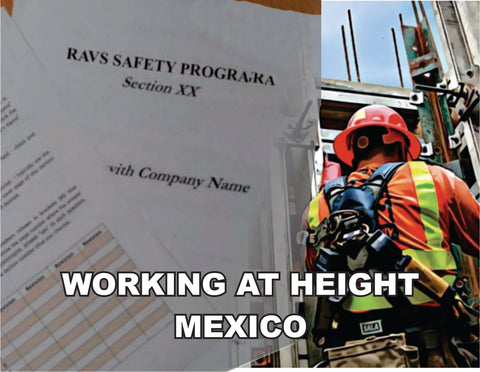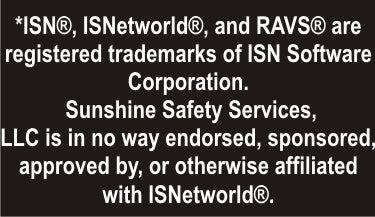Working at Height Program - ISNetworld RAVS Section - US - Mexico
$ 29.95
Working at Height Program - ISNetworld RAVS Section - US - Mexico
This Working at Height Program - Mexico (ISNetworld® RAVS®* Section), in addition to being a complete and functioning written safety program (chapter), it also contains all the required text elements that are sought by the ISNetworld RAVS® (Review And Verification Service) reviewer. This plan has been previously submitted and has achieved a 100% approval rating for our clients.
- All programs are guaranteed now and in the future to achieve 100% approval.
- There are NO maintenance or subscription fees.
- Simply notify us if any program falls out of compliance and we will correct it at NO CHARGE.
You are downloading a MicroSoft® Word document file to your computer that is completely editable:
Working at Height Program:
- Approximate Word Count: 5,910
- Approximate Number of Pages: 15
- Page Reference Answers to RAVS Reviewer’s Questions: 11
You will also receive instructions for a simple two-step process to place your company name and safety person's name throughout this word document to conform it to your company. Please review, and feel free to alter or add to it as you wish with any specific company information or safety policies that you may already have.
The first two pages of the document are guidelines for conforming this safety manual section, an index for completing the RAVS® questionnaire (with all page references), and uploading the section.
If you experience any difficulty filling out the questionnaire, or have any questions in general about these documents, call 314-570-0072, or e-mail me at vsunshine1@gmail.com.
An excerpt from ISNetworld® RAVS®* Safety plan Working at Height Program
RISK ASSESSMENT
The aims of risk assessment are to:
- provide a basis for identifying, evaluating, defining and justifying the selection of control measures for eliminating or reducing risk, and to therefore lay the foundations for demonstrating the adequacy of the standards of safety for working at height;
- identify hazards that are classified, prioritized and addressed based on the risk associated with the task (Risk analysis matrix outlining severity and probability).
- provide Replace with Company Name and its employees with sufficient objective knowledge, awareness and understanding of the risks of major accidents of falls and falling objects;
- capture knowledge of risk of a major accident so it can be managed, disseminated and maintained. The management of knowledge generated in the risk assessment will also greatly assist the efficient development of a safety report.
An analysis of the prevailing conditions in the areas in which the work will be carried out at height will be carried out, prior to its completion, in order to identify the existing risk factors. [1]
Jobsite Hazard Analysis (JHA’s)
This is a technique developed to address human factors, procedural errors and ‘man-machine interface’ issues. This type of hazard identification is useful for





